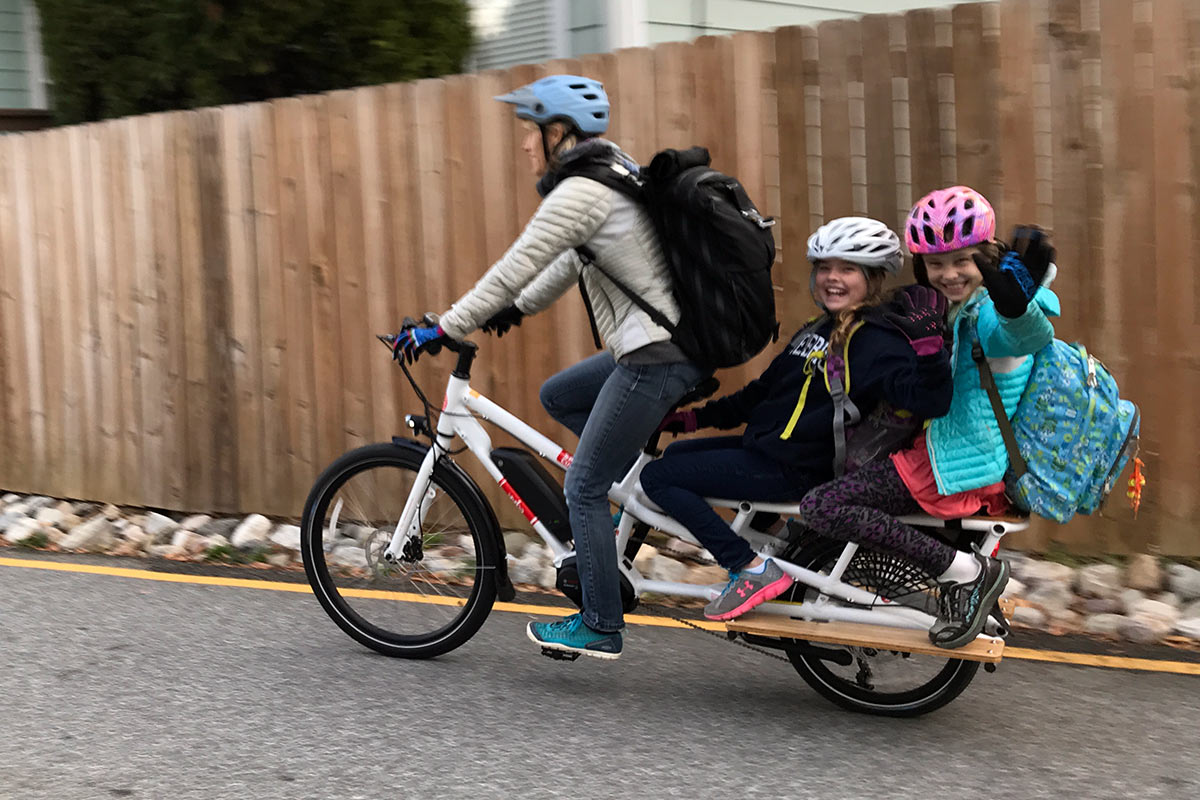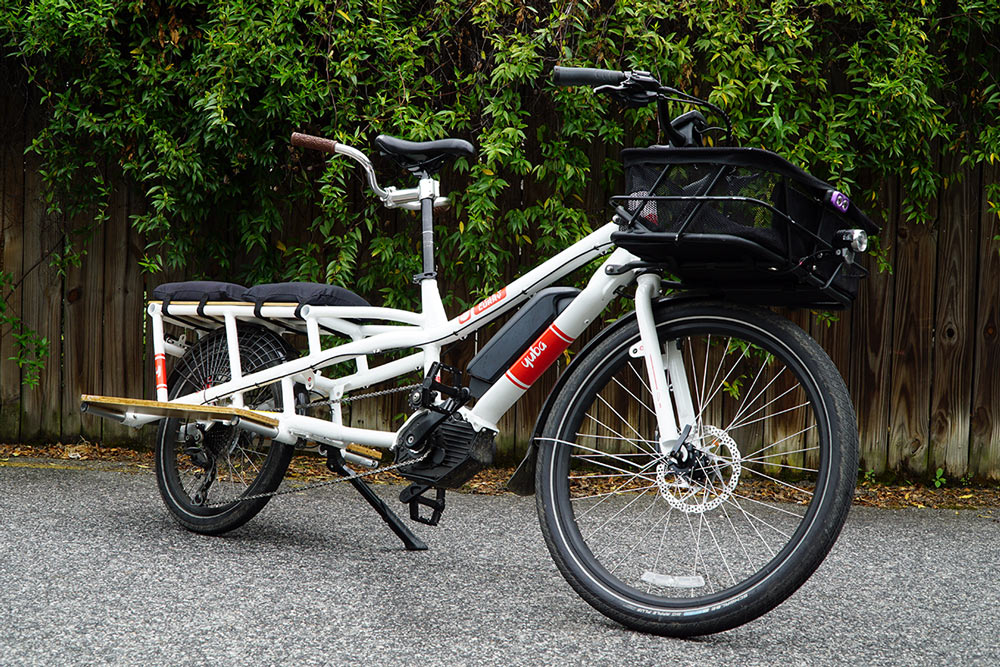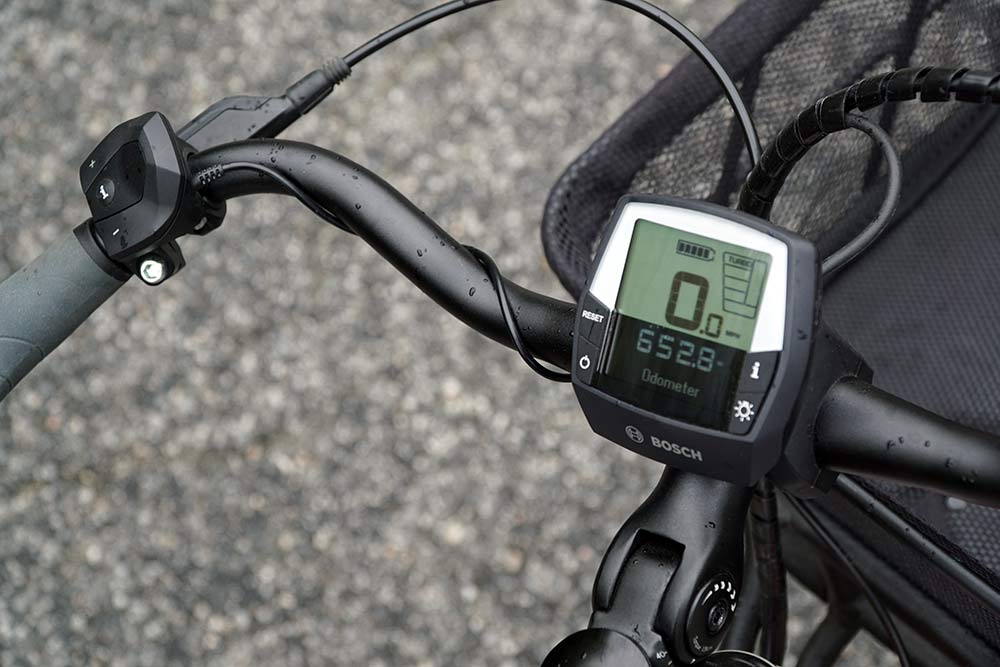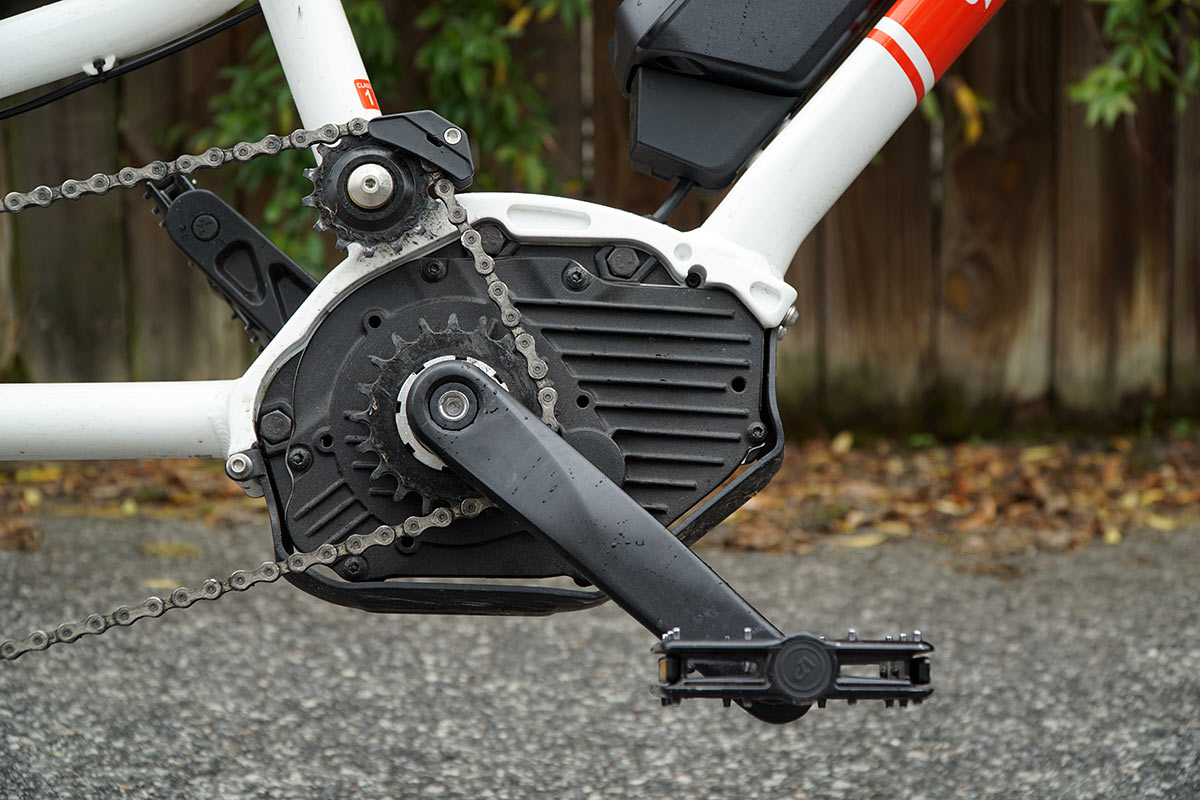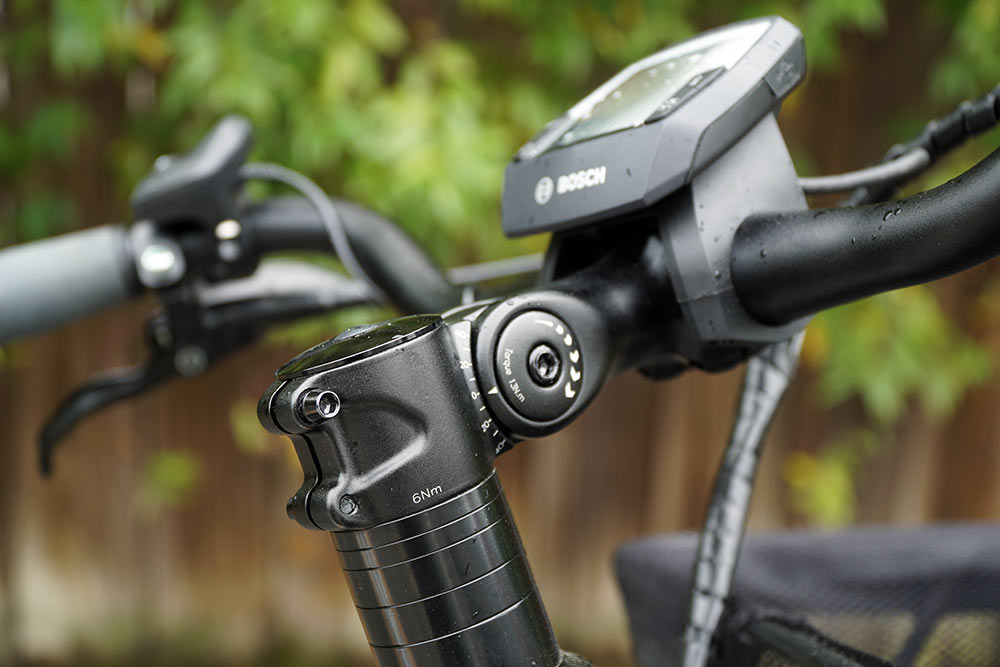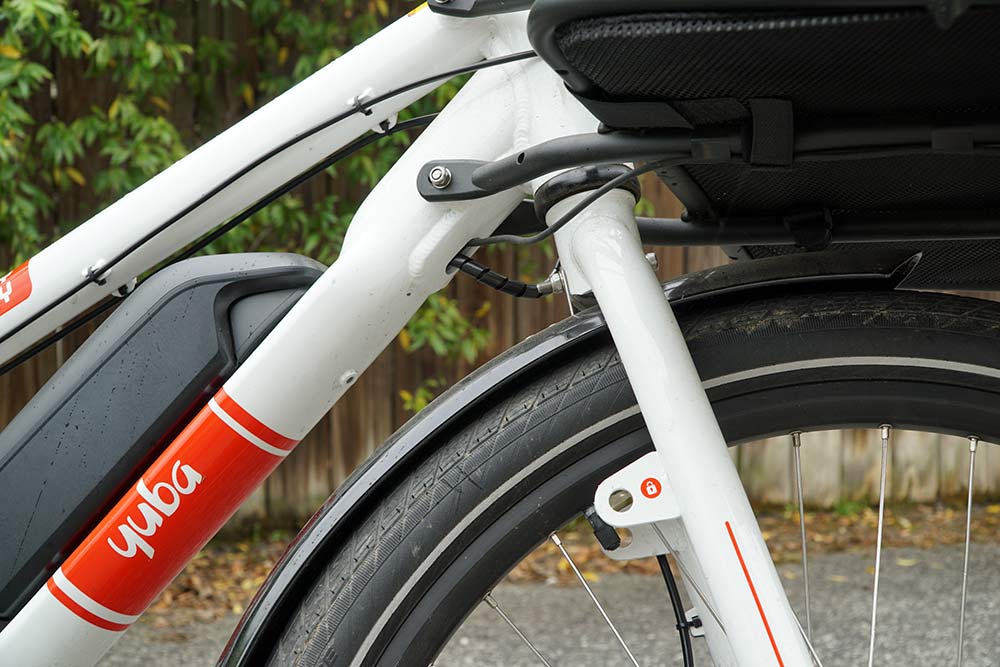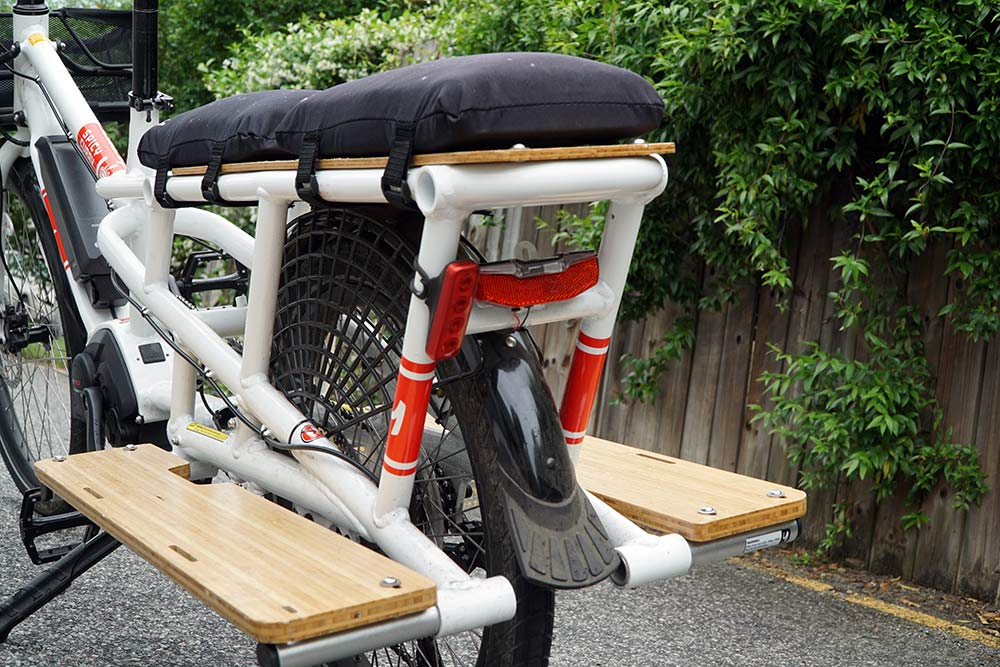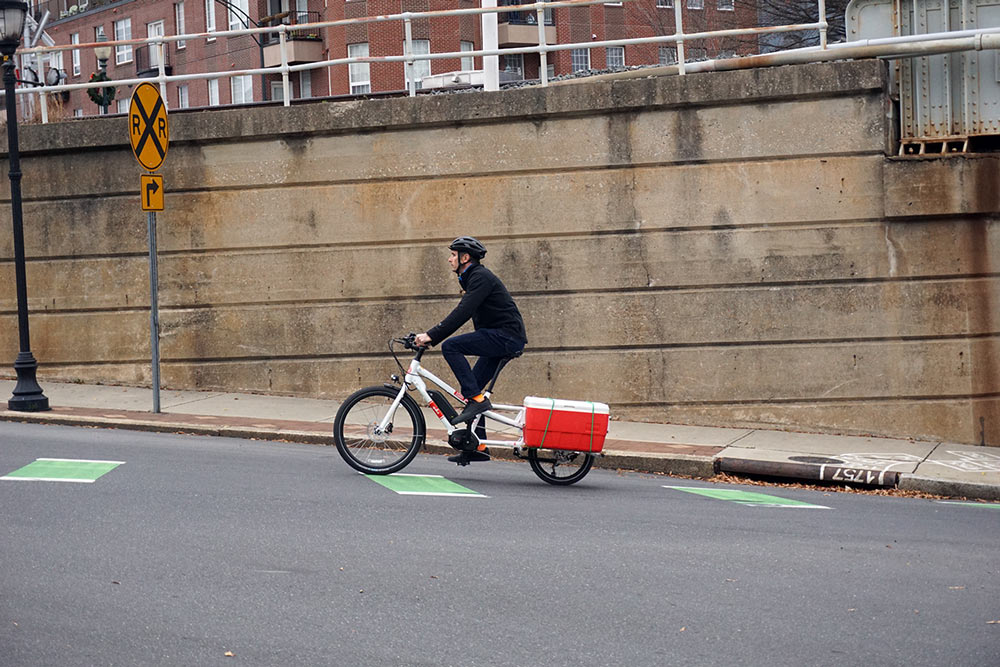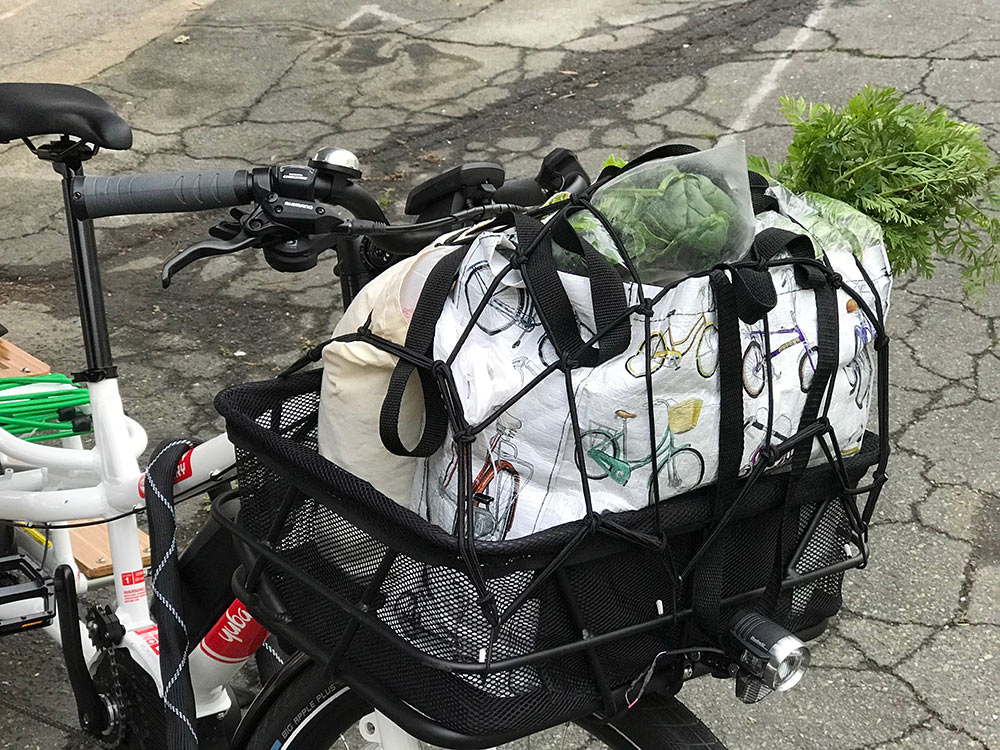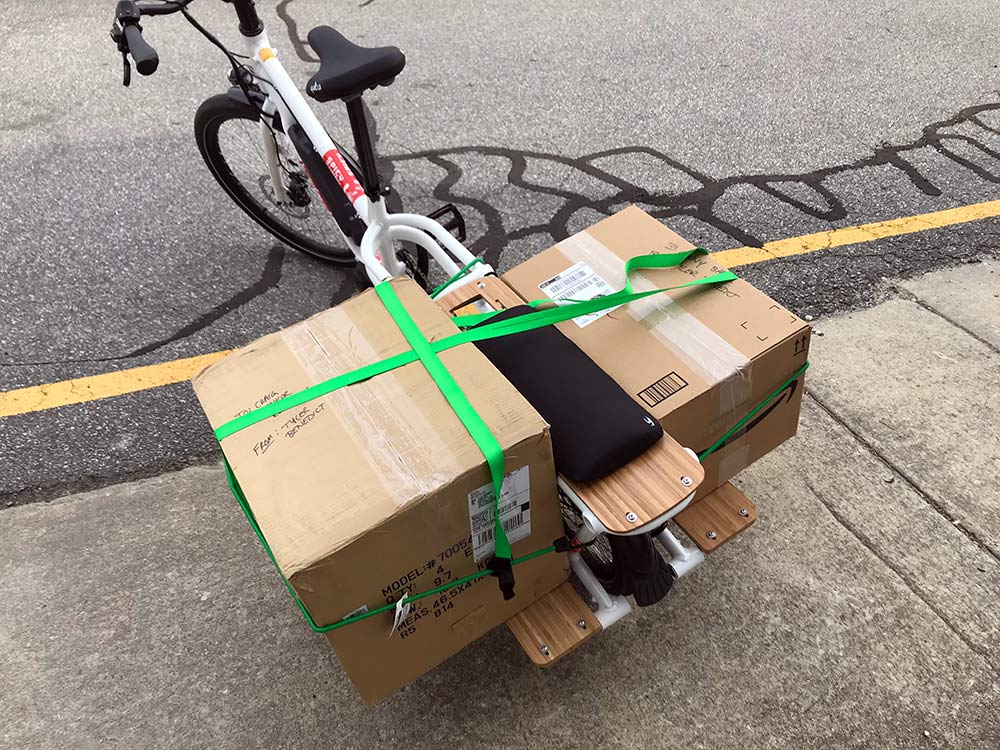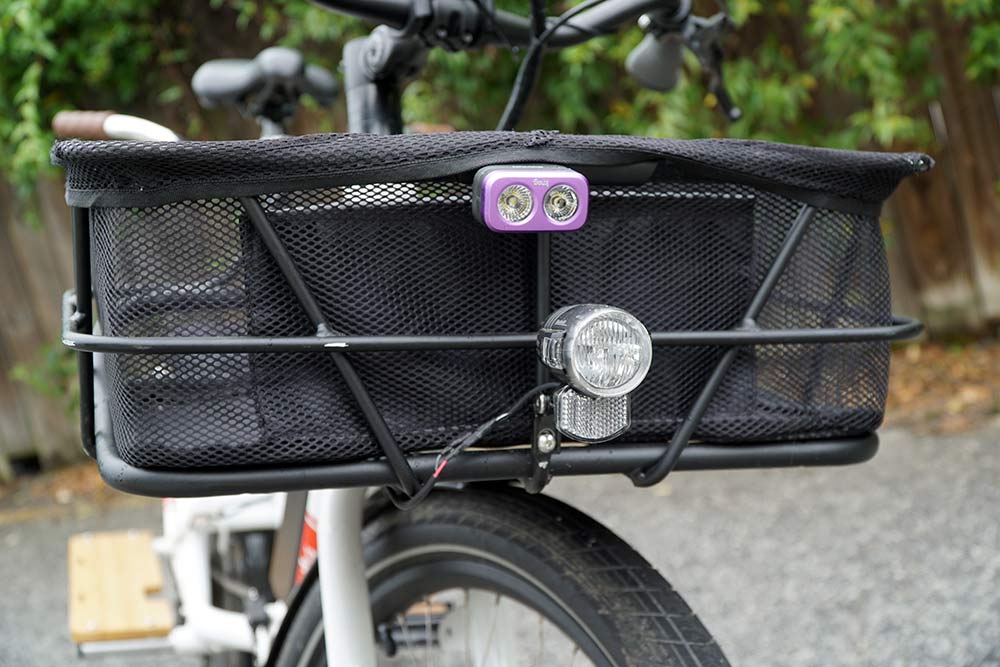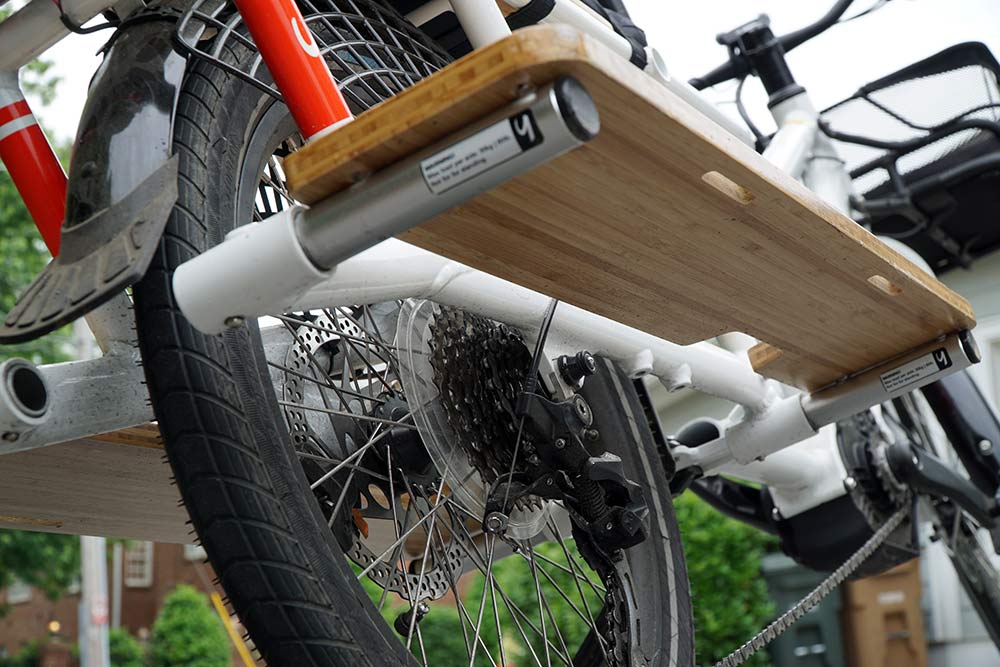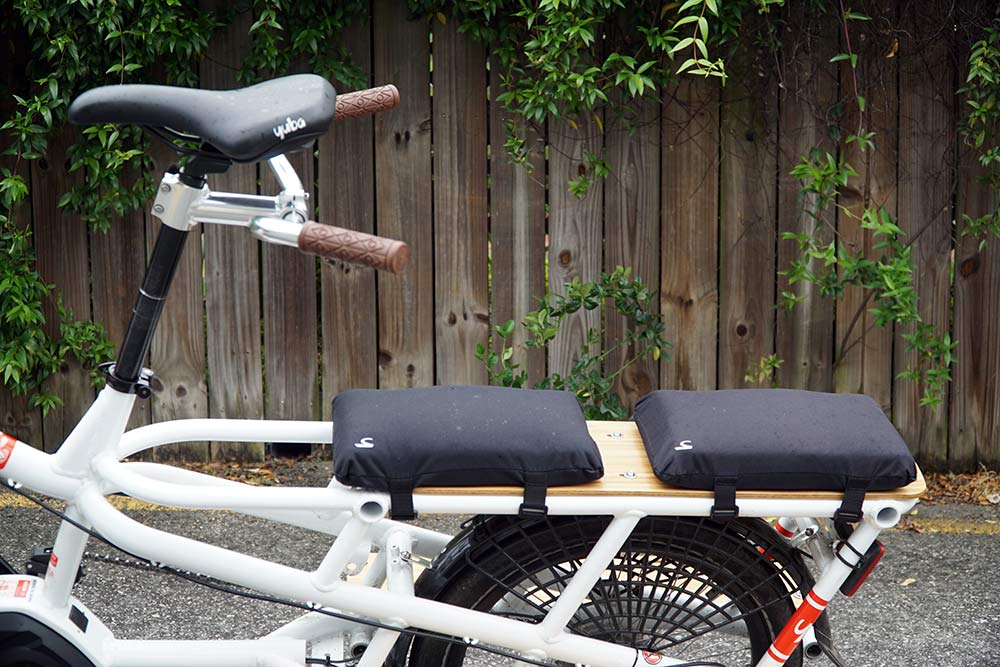We’re a one-car family. But with the Yuba Spicy Curry electric-assist cargo bike, it’s like having a second vehicle that’s better and faster (and more fun) for quick trips. We’ve put our test bike through its paces for almost three years now, and it’s proven durable, reliable and oh so practical. If you’re looking for a second vehicle that can haul the people and the party, here’s everything you need to know to consider the Spicy Curry as an alternative to another car…
Yuba Spicy Curry features and details
The Yuba Spicy Curry starts with a low-slung, step-through frame made of 6061 alloy and a chromoly fork. As you’d want from a bike meant to haul up to 300lbs, it’s a burly build with lots of thick tubes. The only difference in the current (2019) model from the one reviewed here is the addition of a metal chainguard covering the front/top portion of the chain.
The bike uses a Bosch CX 250W motor with 36V Powerpack 400 battery. For us, that meant a week or more of small trips between charges. The Bosch drive system has four assist modes, ranging from barely anything to “turbo”, which honestly doesn’t do a whole lot more than the mode below it on a 60lb bike. We mostly used the middle two modes, with the higher one giving us an extra boost on hills
A remote sits by the left grip and lets you switch modes, toggle between info screens (mileage, trip mileage, time of day, etc.), and apply the “Walk Assist” low-power motor assist for when you have to walk the bike up a ramp.
Bosch is a mid-motor system that applies power directly to the cranks. The frame uses a bolt-on metal cover to protect the bottom of the motor from impacts, but we have yet to make contact with it.
The chain is long. As in, reeeallly long, so there’s an additional cog above the chainring, and it uses a small chain guide to keep the chain from bouncing off. Why? Because that long of a chain will get some oscillations in it over bumpy roads, and those will throw the chain off if you remove the guide. We tried, and it was quick and merciless. The downside is that the guide tends to come loose and make contact with the chain, which makes noise. And that much chain (probably 2.5x more chain than a normal bike) just makes a lot of noise in general. That’s really about the only annoyance we have with the bike… in stock configuration.
The rest of the build is solid, mostly Shimano, which means good hydraulic braking and shifting.
An adjustable stem and long seatpost helps it fit a claimed rider height range of 5′ up to 6’5″. I’m 6’2″ and have the seatpost extended all the way to the minimum insertion line, though. The nice thing is, both of my kids and wife have been able to ride the bike by doing nothing more than making a quick-release seatpost collar adjustment.
We ordered several accessories with the bike, which I’ll discuss below, but it does come with a good starter set of items – full coverage fenders, integrated front wheel lock holes (lock not included), and a spring-loaded front wheel stabilizer that I never installed (hence, it’s not visible).
Cables and hoses all run externally, but the wires for the front and rear lights are hidden in the frame. Without that optional front basket, the headlight mounts to the fork crown. And the headlight is decent, providing moderate visibility on dark streets.
The tail light, like so many integrated tail lights, is fairly weak and doesn’t do much for daytime safety visibility. So I mounted a Knog blinky to add a little flash. With kids riding on the back, I wanted cars to notice us…which, funnily enough, they tend to do anyway when you have two grade-school girls riding on the back.
Long Term Review: 800 miles and counting
Eight hundred miles over three years may not sound like a lot, but it’s a lot of trips. A lot of one- to three-mile trips that weren’t taken in a car. Hundreds of them if you do the math. Several per week. Considering our travel schedule, it actually adds up to almost daily use. And in all that time, we’ve had just one flat and one chain fall off. That’s pretty good reliability in my book.
Other than the chain noise I mentioned above, the bike has been a stellar performer. There are a couple things worth noting if you’re new to cargo bikes:
- The larger front wheel helps with stability and smoother roll over, and the smaller rear wheel helps keep the weight and center of gravity low. That’s also good for stability, but it does make for a bumpier ride because…
- You need to pump that rear tire up to about 45-50psi when hauling anything heavy. Like a kid. Or two kids. Otherwise it’ll squirm in the corners, and you increase your chances of a pinch flat. We had to top ours off about every two weeks to maintain proper pressure. This is where a suspension seatpost would come in handy, because those high tire pressures make for jarring impacts over potholes, etc.
- The $4,500 asking price is really just the starting point, you’re going to need accessories to really make the bike useful (see below).
- The Bosch CX 250 may not seem like a very powerful option compared to “performance” e-bikes, but it gets the job done. And we’ve seen no signs of it slowing down over three years. The battery has held up really well, too.
Can this replace your car? Maybe. I’ve used it to go to Costco, UPS, the grocery store, school runs, farmers markets and more. My kids use it to ride their friends around the neighborhood. Kristibee rides on the back to parties when we know we aren’t going to want to drive home. So, yes, for us, it’s replaced the need for a second car.
Which cargo bike accessories do you need?
The front cargo basket is a must have. Yuba’s Bread Basket ($180) is rock solid and mounts to the frame, so it stays pointing straight ahead when you turn the bike. It has a remote mount for the light and comes with the wire extension to relocate it. Be prepared to keep tightening the light down, as it does tend to rotate down. I added a Knog light to the front just to get some blinking action here, too…but the stock light is bright enough to see where you’re going at night.
As much as I love Yuba (this is my second cargo bike from them), I’ve found that their accessories sometimes need a little elbow grease to install, usually because the mounting points are just slightly (as in, maybe a couple millimeters) misaligned with the accessory’s bolt holes. So, if you’re not comfortable muscling something into place, have your shop install everything.
The Bamboo side boards ($120) create a foot rest for passengers, and a platform for cargo. They bolt to included rods that slide into the tubes on the bike, using pop-out nubs to stay attached. They work great and are easily removable when not needed. My only gripe with these is that the tubes have enough gap that they rattle when not loaded down. So, they’re quiet when riding my daughter to school, but on my ride home, they rattle worse than a clapped-out old pickup truck. If I were less busy, I’d wrap the inner tube with electrical tape to create a tighter fit, but here were are, three years later…
The last few things you’ll want are meant only for carrying passengers. Two Mini Soft Padded Seats ($30 each) and Bamboo Deck ($40) create a comfortable seating position for two small riders. They also make a slightly longer single cushion ($40) if you’re only ever going to be carrying one person. They offer a small metal loop that mounts to the front of the deck, but we prefer the Hold On Bars ($70) and Stem ($35), which adds a second handlebar to the seatpost. The spider-web rear wheel covers come stock on the bike and should be kept in place to prevent small feet from messing up your spokes.
It all adds up to just over $5,000 outfitted as shown, and worth every penny in our book. If you don’t need as much cargo (weight) capacity but still want to move a kid or two and front basket capability, the e-Boda Boda starts at $3,200 and uses a Shimano STEPS drive system with comparable output.
